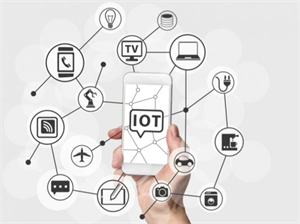
IT is only a means. And IoT is not necessarily the solution. And I’m not just talking about IoT gadgets like the not-so-smart smartlocks, smart lighting, expensive juicers, connected refrigerators or other online, possibly automatically shopping, consumer equipment.
Even business-oriented and industrial IoT is often too much focused on the technological capabilities, rather than on business use. As a result, many IoT projects are stuck in the proof-of-concept (poc) phase and do not evolve into pilots and practical acceptance. I think the only way to get business buy-in is through the creation of a clear business case.
Past the hype
This is easier said than done. The business case is often hard to predict. Pressure can be high, partly due to the fact that IoT is now beyond its peak on the Gartner hype cycle. The top of the hype lies behind us and the downturn to ‘the trough of disappointment’ has set in. For those who are not easily discouraged by Gartner, there are still some genuine pitfalls.
In fact, the design of the poc-phase is one of these pitfalls. Many proof-of-concepts are set up without or with insufficient business base. This amounts to a discrepancy between the poc and business reality. Test setups for IoT solutions often put too much emphasis on quick results.
Too much time and effort are spent on matters that are less important in practice. And, perhaps even worse, too little time and effort goes into things that are much more important in practice. One example are the upcoming European Data Protection Rules GDPR.
Go for distinctiveness
A better approach to the poc phase not only increases the chance of success, it also reduces costs because time is spent in more meaningful ways. This also includes insight into what has become a commodity nowadays. Namely, that IoT is an end-to-end value chain.
There is little credit to be gained from developing components like IoT hardware, network edge capabilities, connectivity, and data intake. It is too difficult for organizations to distinguish themselves here. Instead, they should focus on intelligent clouds, data analytics, reporting and action. The latter is what brings the desired business use.
IoT is only a concept; a means to innovation and acceleration. This means can have a goal, for example an unforeseen reduction of energy consumption.
Let us look at the example of a company that stores deep-frozen food. Frozen foods are very energy intensive, but the freezing itself takes place within a specific temperature range. The low temperature does not have to be constant. Sometimes less freezing is acceptable. The company in question has an hourly contract, with a rate structure, from an energy provider. And that gives them the chance to use less energy at times when it is expensive. During cheaper hours, they can freeze harder.
On the way to greater benefits
Nevertheless, many current IoT applications involve no more than the automation of existing business processes and practices. But that is just the beginning. Next to smarter power consumption on an industrial scale, we can think of many new activities and even completely new business models.
Efficient monitoring allows for further optimization of business processes. This solves two problems at once. Because optimization requires data collection, and you can do more with more data. This extends to many departments within the organization, as they know the business very well.
Means for innovation
A good deployment of IoT can thus provide insights that allow other value-added services to be developed. This is completely in line with the shift from hardware sales to services. New services allow us to tap into other markets – through IoT, which is still a means and not the goal. IoT is hot, but no more (or less) than a good concept; a means to drive innovation and acceleration.
Note: This article was first published via Computable on 6 November 2017 (in Dutch)
Subscribe to our RSS feed